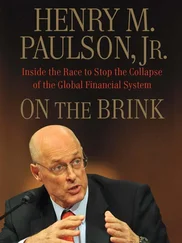But it remains doubtful whether these particular memories stemmed from Adam of Bremen’s transit of Telge; it seems likely that the few people living here made their living from passing travelers, and maybe even competed to make money from them, so they presumably had little reason to forge closer bonds with people who, when all was said and done, had only come to them with the aim of passing them by.
But it’s also a delicate business, being a thoroughfare. The element of passage can easily grow to be more important than the place itself. The place can invest its greatest effort in being a place of transit, while its greatest fear is that the traffic will cease and the place be called into question.
There’s nothing unusual, of course, about such a place, whose location is its raison d’être. Every town with a railroad station knows this, and it’s not unusual for such places to wither away once the through traffic finds other ways around: when a waterway is drained, a railroad line rerouted, or a new motorway built; or when new means of communication are adopted; or when the need to travel from one particular place to another tails off or disappears. What’s more, people who habitually pass through a place readily start to see themselves as its main characters and those who line their transit route as mere extras. Perhaps over time they even develop prejudices about people who prefer to stay put in the place they themselves prefer to pass through as smoothly as possible; they start to perceive these others as a bit less urbane, a bit less enterprising, a little slower, at worst a little more stupid. People and places that are shaped by being perpetually seen in passing can for the same reasons accept the idea that they don’t deserve much more.
Telge is born as a thoroughfare and shaped by its difficulties in remaining a thoroughfare over the centuries. So when that narrow neck of land grows wider, and the ships grow bigger, and the favored thoroughfare becomes the longer but more navigable route via the rapidly expanding town of Stockholm, the dream of a canal is born.
When Södertälje canal is finally excavated and eventually opened in October 1819 and smaller vessels, after a break of about a thousand years, can again ply the waterway through Södertälje between the Baltic Sea and Lake Mälaren, the situation is very different. Building canals is in the spirit of the age, it’s true, and a canal through Södertälje is considered a national interest, but to Södertälje the canal proves to be no guarantee of prosperity and rehabilitation.
In fact, the canal’s a flop. It’s pretty to look at and stroll along, of course, and possibly an attraction for those passing through, but the number of boats using it is far too small, and its costs outstrip the income it generates. The main traffic through the town is no longer by boat between the sea and the lake, but by horse-drawn carts and coaches, and before long by railroad, and in a distant future by car, between Stockholm and the world, that is, from one bank of the canal to the other. The wider and deeper the canal is dug, the wider and higher the bridge over the canal must be built, in order for one thoroughfare not to block the other.
As time goes by, it’s no longer self-evident that the quickest route between Stockholm and the world must of necessity pass through Södertälje. New bridges and modes of conveyance open up new options for circumventing the pigs and the biscuit sellers of the town center and creating a straighter and quicker thoroughfare. Södertälje is perfectly placed for the shortest route by water between the Baltic Sea and the inner reaches of Lake Mälaren, but not for the shortest overland route between Stockholm and the world, which becomes obvious when it’s time to put a new railroad line over the new canal and to build a new railroad bridge, and a straightening and shortening of the passage can be considered. The straightest route between Stockholm and the world hereby turns out to pass several kilometers south of Södertälje, with the result that the railroad station in Södertälje is built on the southern fringes of Näset and is given the name Södertälje Södra, which means Södertälje South. To get to the station that is given the name Södertälje Central and is located in the center of town, you must switch trains in Södertälje Södra.
Along the shortest and quickest rail route between Stockholm and the world, Södertälje becomes a railroad station at the edge of town, with a single spur to the town center.
In due order, then, the foundations for the future cityscape on the southern fringes of Näset are inaugurated: the railroad bridge, the railroad station, and the widened and deepened canal. On October 19, 1921, the first train runs on the new railroad bridge over the new canal to the new station at Södertälje Södra, where the pines are still standing below Platform 1.
This is not quite how it was envisaged, so no one knows as yet what to do with the pines. It was envisaged that the railroad would run somewhere else and the pines would be replaced by a social vision, but because it shortens the trip between Stockholm and the world by two minutes, Södertälje must exchange big dreams for petty adaptations, which become a definitive part of the place’s history in the summer of 1943, when ax blows echo amid the heavily falling pines and the new, three-story yellow-and-gray apartment blocks are set out in rows along the stone-paved boulevard below the railroad and a cityscape of sorts rises up at a furious pace in the enclosed enclave between the canal, the railroad embankment, and the harbor.
The furious pace is set by the wartime market. In Södertälje, the wartime market is booming. From 1941 onward, all curves are rising. The boom starts before the war and accelerates from that point on. The war’s good for Södertälje, which is growing after twenty years of stagnation. The war’s good for the production of trucks, armored vehicles, and penicillin. The war’s good for a town and a land of undamaged factories. The war’s good for the small pharmaceutical company, which during these years quadruples its turnover and triples its staff and becomes a major industry. The war’s good for the big truck factory, which during these years grows into a global business and needs to recruit people from far and wide.
It all comes as a surprise to Södertälje, which has not prepared itself for the role of rapidly expanding immigrant town or planned any housing for the new workers who stream in by the thousand. “Housing emergency” becomes a charged phrase in Södertälje during these years, and ending the housing emergency is seen as the final step in building the new and better society whose establishment will be completed as soon as the war is over.
Any way you look at it, the war’s good for the building contractors; they go full throttle during these years and can only regret that the war prevents them from procuring the manpower and materials to go faster and build more. For the time being, the big truck company has to advertise in the local paper for rooms and apartments for its employees. “Rent guaranteed,” it says. For the time being, the big truck company will also have to build bachelor barracks on its own property, basic accommodations for single male workers that cause a certain level of concern in the community, since the term “bachelor barracks” has a bad ring to it. Many marriages are postponed because of the housing emergency, says the local paper. Many fear that the housing emergency could lead to social unrest.
What’s feared most, however, is the peace crisis — yes, that’s what it’s called — by which is meant a major slump as soon as the guns fall silent, or even a deep depression like the one after the previous war, when Södertälje’s economy ground to a halt.
Читать дальше












